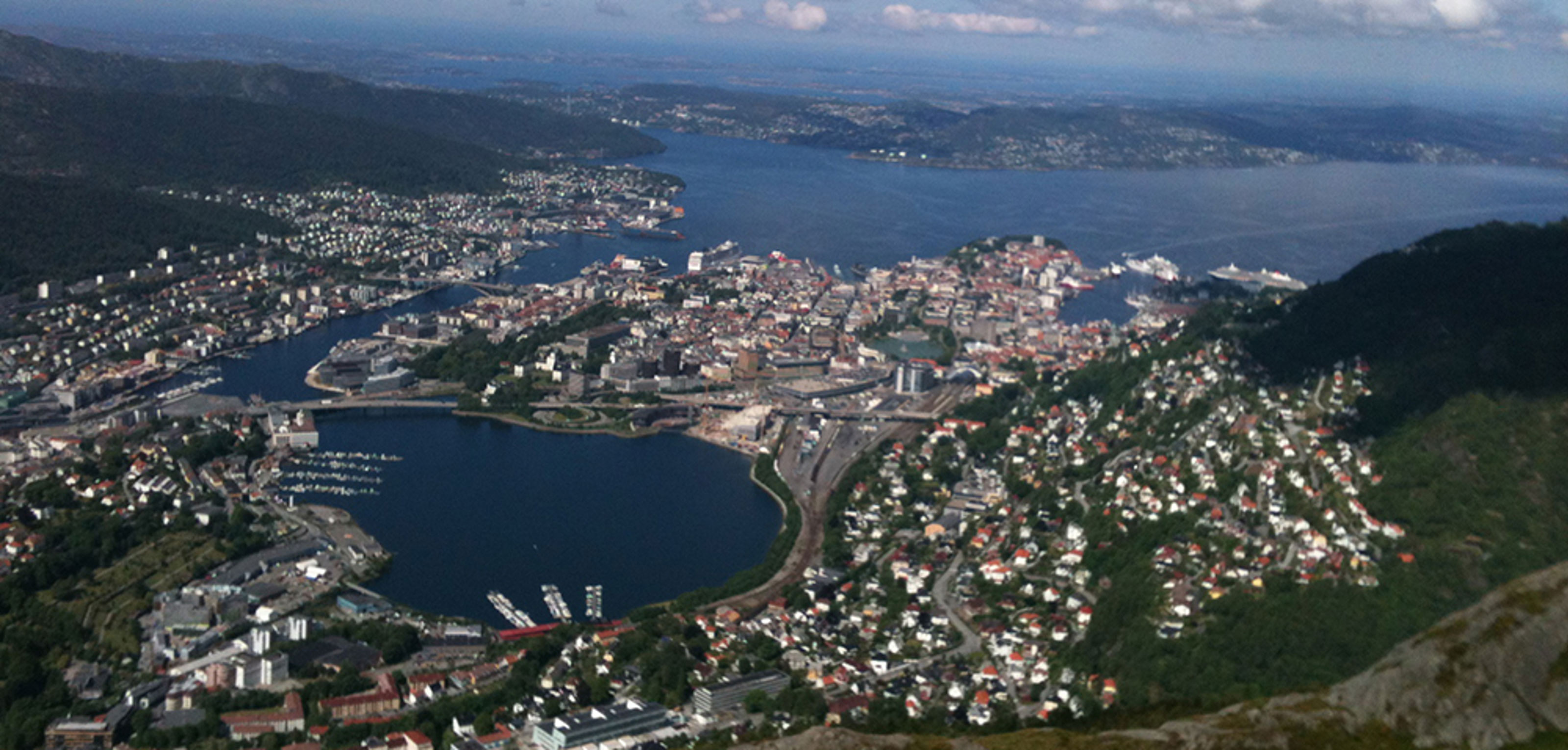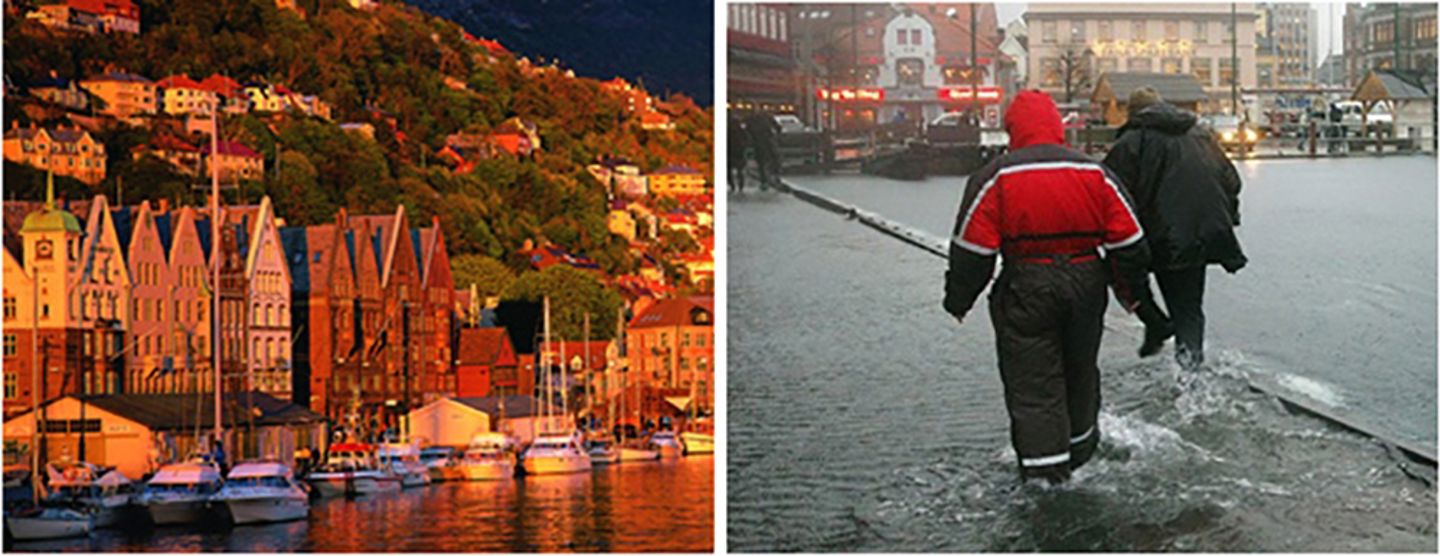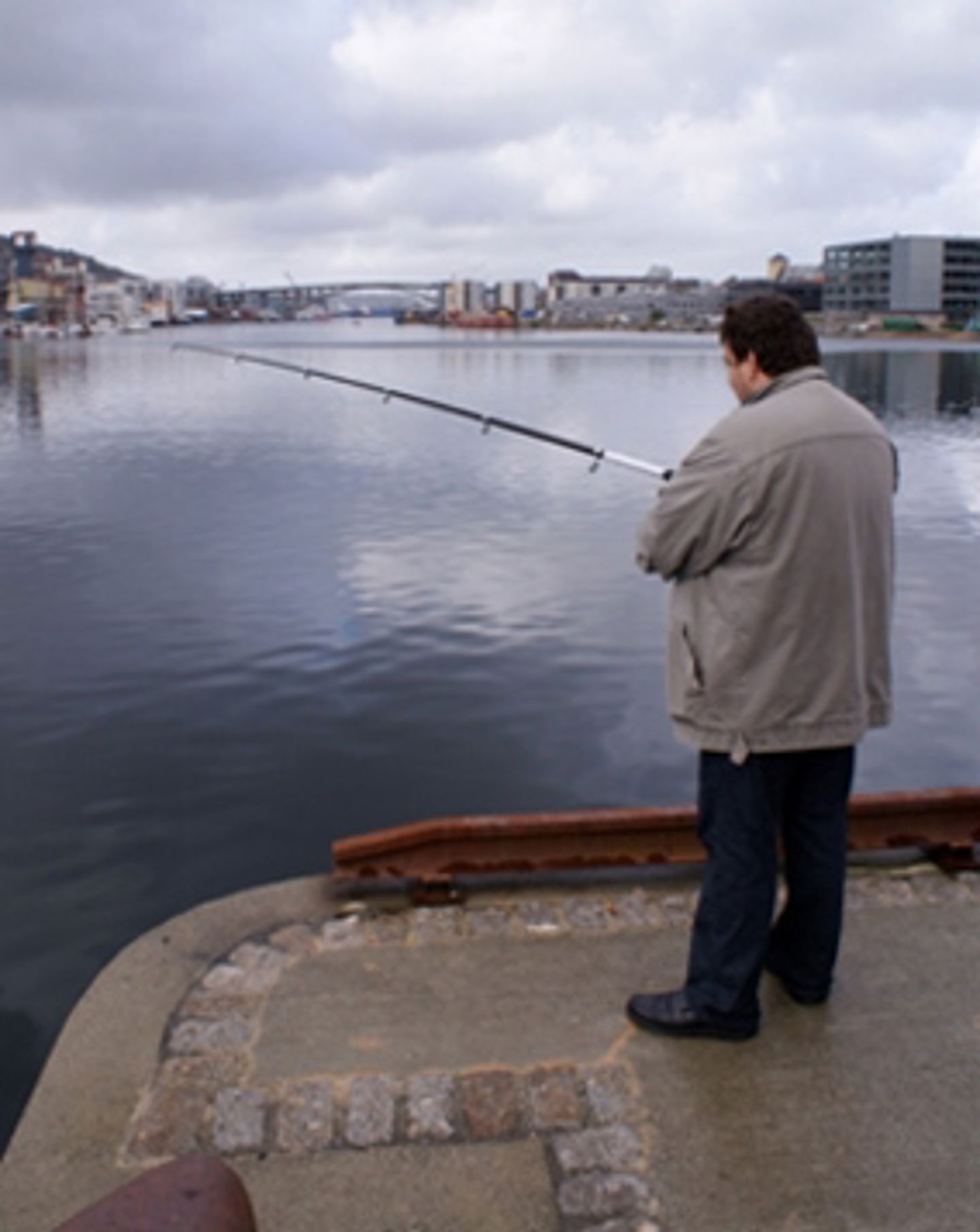- NGI /
- Projects /
- Case studies /
- Byfjorden Norwegian sea Fjord
Byfjorden Norwegian sea Fjord
Byfjorden is a 16 km long fjord located in western Norway by the city of Bergen. For the purposes of our case study site we will focus on the southern part of the fjord which stretches into Vågen and the city centre of Bergen as well as Puddefjorden located on the west side of the Nordnes peninsula.

Byfjorden, with its water depths ranging from about 5 to 100 meters, frames the city of Bergen along its waterfront. It is also a natural landmark, visible from much of the city as it is situated between the seven mountains that encircle Bergen.
With its close access to the sea, the city of Bergen is nicknamed the "Gateway to the fjords" and has a long tradition of shipping and seafaring which has influenced the development of the region. Bergen was an important Hanseatic merchant trading centre during the Middle Ages and was the largest town in Norway until the 1830s. It is currently the second largest city in Norway with a population of about 260,000 and by Norwegian standards is a highly urbanised area. Bergen and Byfjorden remain a regional centre for shipping and transport as well as a centre for maritime activities and research in the aquaculture and the oil and gas industries.

Tourism is also important for the local economy, with about 250 cruise ships and 300,000 passengers visiting each year. This despite the reputation Bergen has for being the "Rainy city". With its coastal climate it can rain quite a bit, averaging 2250 mm annual precipitation and a record of rainfall for 85 days straight. However, in Norway and particularly in Bergen, there is no such thing as bad weather - only inadequate clothing (-Det fines ikke dårlig vær, bare dårlig klær).
Thus there is great deal of acceptance for the weather. However, the impacts of climate change and severe storm events are contributing to the risk of flooding, landslides and urban run-off. This presents challenges for preserving Bergen's cultural heritage including the wooden Hanseatic buildings situated at Bryggen (UNESCO World Heritage Site) as well as challenges for maintaining Bergen's economic livelihood.

A legacy of industry that has included shipbuilding yards, engineering workshops, paint production factories, sardine canneries, a naval base and submarine bunker as well as a municipal gas production plant is also present. These activities along Byfjorden have resulted in elevated levels of contamination in the seabed sediments. Consumption advisories are in place for fish and seafood caught in Byfjorden due to contamination levels in the fish. Although most locals know not to fish or eat fish caught in the area, fishing activities still occur along the piers. Challenges for managing the consequences of the contaminated sediments are intertwined with preserving the marine archaeological artefacts and cultural layers buried in the seabed as well as ensuring the continuation of tourism, shipping and industrial activities like those that occur at the dry dock located at Laksevåg.
Redevelopment along the waterfront continues as historic industrial sites transition to residential areas and office buildings with Byfjorden central to Bergen's image. Whether it be a walk along the shoreline, boating in the fjord or the rhythm of watching the ship traffic, public access to Byfjorden is just as important as its aesthetic beauty.

Bergen Municipality is active at addressing the challenges related to the management of Byfjorden and the subsequent opportunities for the city of Bergen. This includes participation in the Interegg research project MARE (www.mare-project.no) for managing adaptive responses to changing flood risk which has lead to the establishment of a regional climate panel. Furthermore, the municipality continues to focus on the management of contaminated sediments which has also included participation in the national research project "Sediment and society" (http://www.ngi.no/no/Prosjektnett/Sediment-and-society/) which had focused on stakeholder involvement to achieve an integrated management strategy for contaminated sediments. ARCH's focus at the Byfjorden case study site will build on these experiences as we move forward in exchanging knowledge to address future management of the fjord.
